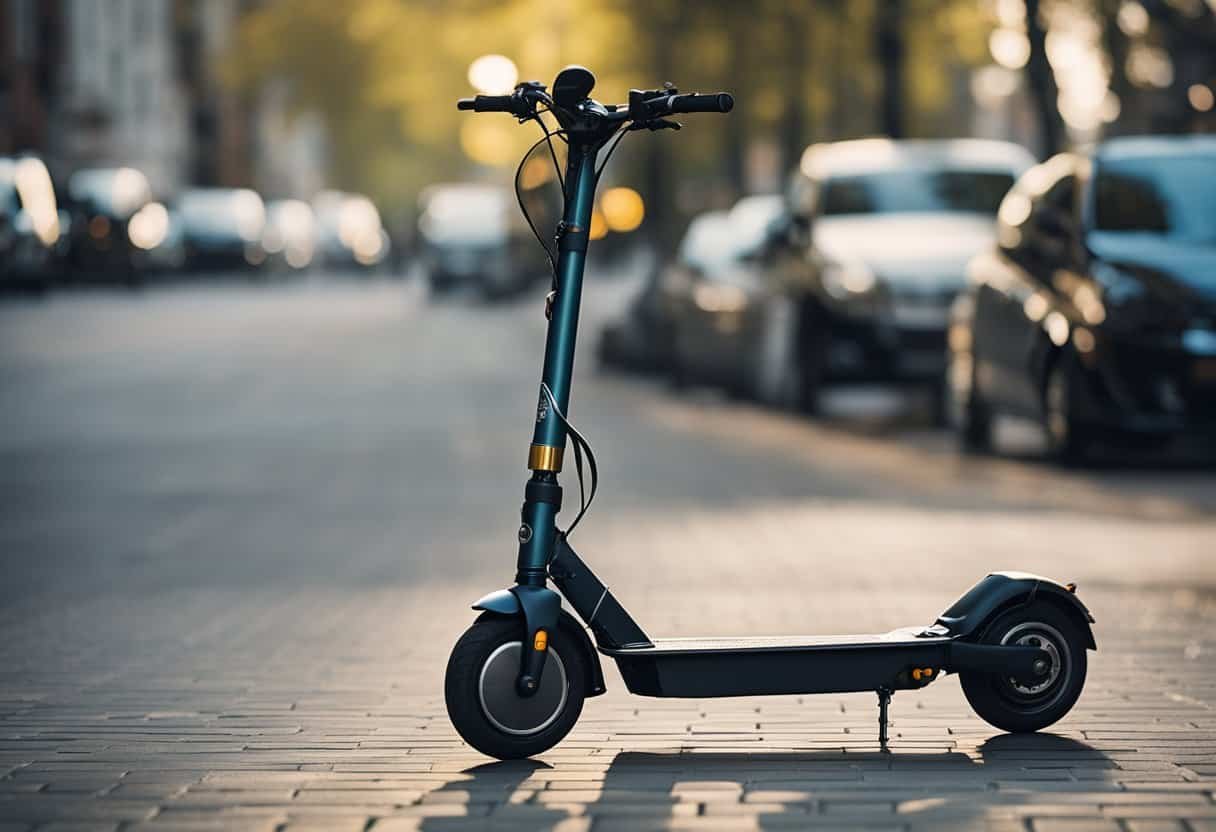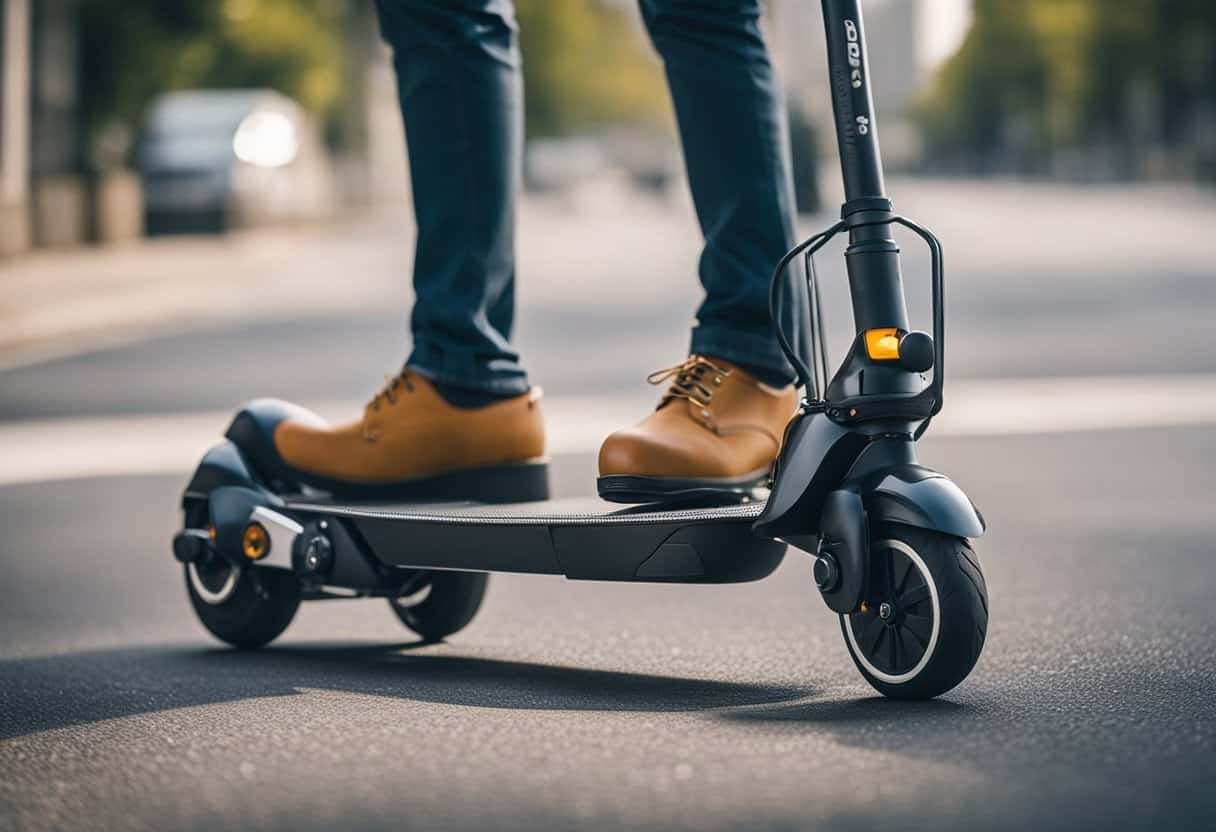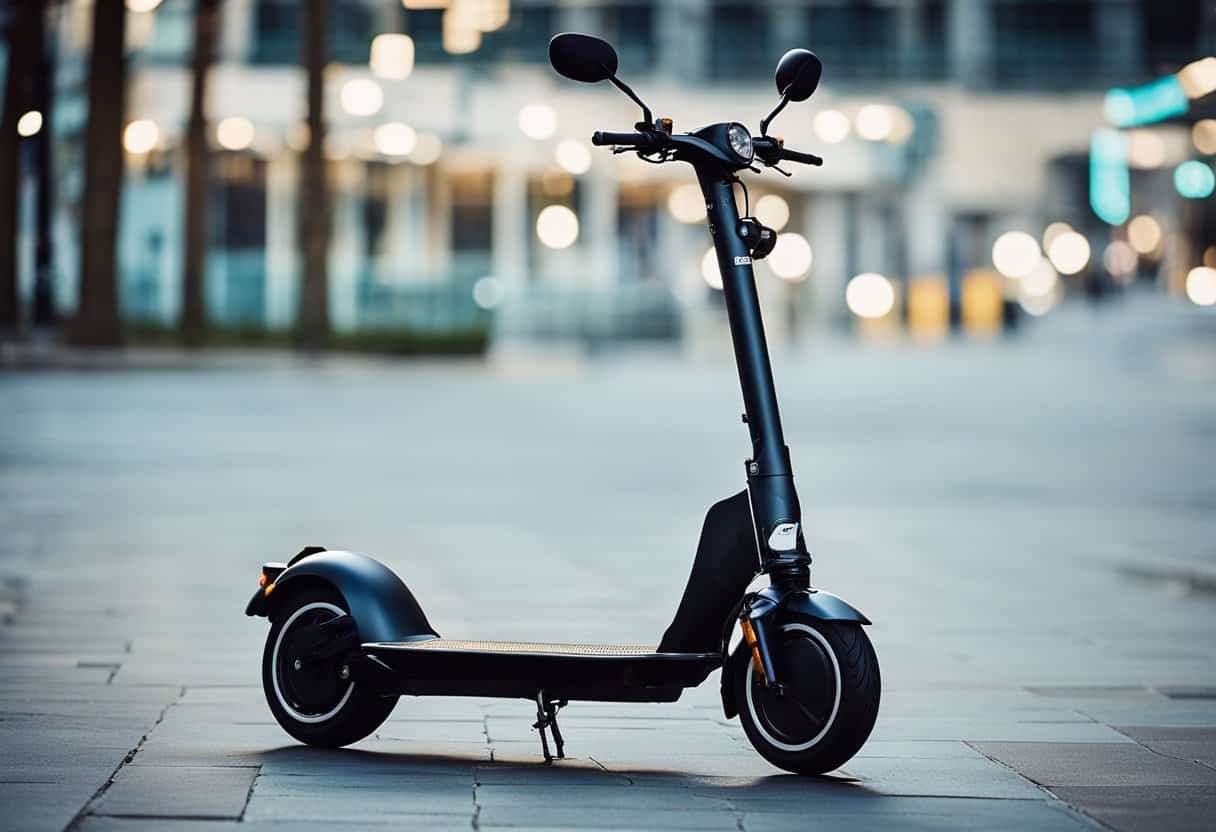If you or a loved one has mobility issues, you may be wondering whether mobility scooters can go on the pavement. The answer is not straightforward, as it depends on the type of mobility scooter you have and the local regulations in your area. However, in general, it is legal to use mobility scooters on pavements as long as they are designed for pavement use and do not exceed certain speed and weight limits.
Understanding the different types of mobility scooters and their classifications can help you determine whether you can use your scooter on the pavement. Class 2 mobility scooters, also known as pavement scooters, are designed for use on pavements and have a maximum speed of 4 mph. They are typically smaller and more lightweight than Class 3 mobility scooters, which are designed for road use and can reach speeds of up to 8 mph.
If you are considering using a mobility scooter on the pavement, it is important to be aware of the safety features and requirements that apply. For example, your mobility scooter should have a horn, a rearview mirror, and an effective braking system. You should also be aware of the legal aspects of using a mobility scooter, such as insurance requirements and local regulations. By understanding these factors, you can make an informed decision about whether a mobility scooter is the right choice for you.
Key Takeaways
- The type of mobility scooter you have and local regulations determine whether you can use your mobility scooter on the pavement.
- Class 2 mobility scooters are designed for pavement use, while Class 3 mobility scooters are designed for road use.
- Safety features, legal requirements, and practical considerations should be taken into account when deciding whether to use a mobility scooter on the pavement.
Understanding Mobility Scooters
If you have limited mobility, a mobility scooter can be a great way to maintain your independence and get around more easily. Mobility scooters come in different types, including road mobility scooters, pavement mobility scooters, and travel mobility scooters. In this section, we will take a closer look at mobility scooters and answer the question of whether they can go on the pavement.
Types of Mobility Scooters
Mobility scooters are motorized vehicles that are designed to help people with limited mobility get around more easily. They are similar to powered wheelchairs, but they are generally larger and more powerful. Mobility scooters come in different types, including:
- Road mobility scooters: These are designed to be used on the road and have a higher top speed than pavement mobility scooters. They are also equipped with lights, indicators, and other features to make them safer on the road.
- Pavement mobility scooters: These are designed to be used on the pavement and have a lower top speed than road mobility scooters. They are generally more maneuverable than road mobility scooters and can be used in indoor spaces like shopping centers and museums.
- Travel mobility scooters: These are designed to be lightweight and portable, making them easy to transport in a car or on public transport. They are generally smaller and less powerful than road and pavement mobility scooters.
Can Mobility Scooters Go on the Pavement?
In most cases, pavement mobility scooters are allowed on the pavement, but road mobility scooters are not. The maximum speed for pavement mobility scooters is usually around 4 mph, which is slower than the average walking speed. This means that they are generally safe to use on the pavement, and they can help people with limited mobility get around more easily.
However, it is important to remember that pavement mobility scooters can be a hazard to pedestrians if they are not used safely. You should always be aware of your surroundings and give way to pedestrians, especially in crowded areas. You should also avoid using your mobility scooter on the pavement if it is not in good condition, as this can increase the risk of accidents.
In conclusion, mobility scooters can be a great way to maintain your independence and get around more easily if you have limited mobility. Pavement mobility scooters are generally allowed on the pavement and can be a safe and convenient way to get around. However, it is important to use your mobility scooter safely and responsibly to avoid accidents and injuries.
Classification of Mobility Scooters
Mobility scooters are classified into two categories: Class 2 and Class 3. These classifications are based on the maximum speed, weight, and size of the scooter.
Class 2 Mobility Scooter
Class 2 mobility scooters are designed for use on pavements and footpaths. They have a maximum speed of 4mph and are electrically propelled. Class 2 mobility scooters are portable and can be disassembled for easy transportation. They are not suitable for use on roads or highways.
Class 3 Mobility Scooter
Class 3 mobility scooters are larger and more powerful than Class 2 scooters. They are designed for use on roads and highways and can reach a maximum speed of 8mph. Class 3 mobility scooters are electrically propelled and can travel up to 30 miles on a single charge. They are equipped with lights, indicators, and a horn, making them suitable for use in low light conditions.
Class 3 mobility scooters are also known as Class 3 invalid carriages or Class 3 vehicles. They can be driven on the road and have the same rights and responsibilities as other road users. Class 3 mobility scooters are required to have an active flashing amber light when driven on a dual carriageway. It is not advisable to drive them on roads with a speed limit of over 50mph.
In summary, Class 2 mobility scooters are designed for use on pavements and footpaths, while Class 3 mobility scooters are designed for use on roads and highways. It is important to choose the right mobility scooter for your needs and to abide by the road rules and regulations.
Mobility Scooters and Pavements
If you are a mobility scooter user, you may be wondering whether you are allowed to use your scooter on the pavement. The answer is yes, but there are some rules you need to follow to ensure the safety of pedestrians and other pavement users.
Firstly, it is important to note that only Class 2 mobility scooters are allowed on pavements, not Class 3 scooters. Class 2 scooters are designed to be used in pedestrian areas and have a maximum speed of 4mph (6.4kph) [1]. This speed limit is in place to ensure that you can safely navigate through pedestrian areas without putting anyone at risk.
It is also important to be mindful of other pavement users, such as pedestrians, cyclists, and other mobility scooter users. You should always give way to pedestrians and avoid obstructing footpaths. If you need to cross a road, you should use a dropped kerb and check for traffic before crossing [1].
If you are using a pavement scooter, it is important to be aware of the width of the footpath. If the pavement is too narrow, you may need to reduce your speed to adjust to other pavement users who may not be able to move out of your way quickly enough [2].
In summary, mobility scooters are allowed on pavements as long as they are Class 2 scooters and follow the speed limit of 4mph (6.4kph). Always be mindful of other pavement users and give way to pedestrians. Remember to use a dropped kerb when crossing a road and adjust your speed when necessary to ensure the safety of others [1][2].
[1] The Highway Code – Rules for users of powered wheelchairs and mobility scooters (36 to 46). Available at: https://www.gov.uk/guidance/the-highway-code/rules-for-users-of-powered-wheelchairs-and-mobility-scooters-36-to-46 (Accessed: 6 October 2023).
[2] TGA Mobility. Are mobility scooters allowed on the pavement? Available at: https://www.tgamobility.co.uk/help_guides/are-mobility-scooters-allowed-on-the-pavement-an-expert-explains/ (Accessed: 6 October 2023).
Mobility Scooters on the Road
If you are planning to use your mobility scooter on the road, it is important to understand the laws and regulations that apply to road use. In general, mobility scooters are not allowed on motorways or dual carriageways, but they can be used on most roads with a speed limit of 25 miles per hour or less.
To be considered road legal, a mobility scooter must meet certain requirements. For example, it must have a maximum speed of 8 miles per hour and be equipped with lights, reflectors, and a horn. Additionally, the driver must be able to control the scooter safely and have good visibility.
When using your mobility scooter on the road, it is important to follow traffic rules and regulations. This means obeying traffic lights and signs, staying in the correct lane, and using designated crossings when necessary. You should also be aware of other road users, such as cars, bicycles, and pedestrians, and take steps to avoid accidents.
It is worth noting that some areas may have specific rules regarding mobility scooter use on the road. For example, in some cities, mobility scooters are allowed to use bus lanes during certain times of the day. Additionally, some roundabouts may have designated lanes for mobility scooters.
Overall, while mobility scooters can be used on the road, it is important to be aware of the rules and regulations that apply. By following these guidelines, you can ensure that you stay safe while using your mobility scooter on the road.
Safety Features and Requirements
When it comes to using mobility scooters on pavements, there are various safety features and requirements that you should be aware of to ensure a safe and comfortable ride. Here are some of the most important safety features and requirements that you should keep in mind:
Speed and Maximum Speed
Mobility scooters typically have a maximum speed of either 4 mph or 8 mph, depending on the model. It is important to ensure that you do not exceed the maximum speed limit, especially when driving on pavements, as this can pose a risk to yourself and others.
Lights and Indicators
Most mobility scooters are equipped with lights and indicators to ensure that you are visible to other road users. When driving on pavements, it is important to use your lights and indicators to signal your intentions to other pedestrians and road users.
Horn or Horns
Having a horn or horns on your mobility scooter is an important safety feature that can help you to alert pedestrians and other road users of your presence. It is important to use your horn or horns when necessary, but also to be mindful of noise pollution and not to use it excessively.
Hazard Warning Lights
Some mobility scooters are equipped with hazard warning lights, which can be used to warn other road users of potential hazards or dangers. It is important to use your hazard warning lights when necessary, but also to be mindful of not causing unnecessary distractions or confusion.
Braking System
Having a reliable and efficient braking system is essential for ensuring your safety when driving a mobility scooter on pavements. It is important to regularly check your brakes and ensure that they are in good working order.
In summary, when using a mobility scooter on pavements, it is important to ensure that you comply with all safety features and requirements, including speed limits, lights, indicators, horns, hazard warning lights, and braking systems. By doing so, you can enjoy a safe and comfortable ride while also ensuring the safety of yourself and others around you.
Legal Aspects of Mobility Scooters
If you are planning to use a mobility scooter, it is essential to understand the legal aspects that come with it. This section will provide you with an overview of the legal requirements for using a mobility scooter on the pavement in the UK.
Registration, Licence, and Tax
You do not need to register or license your mobility scooter with the DVLA (Driver and Vehicle Licensing Agency) or pay any taxes. Mobility scooters are exempt from vehicle tax. However, you must ensure that your mobility scooter meets the legal requirements for use on the pavement.
Insurance
Although it is not a legal requirement to have insurance for your mobility scooter, it is highly recommended. Insurance can protect you from any liability if you are involved in an accident. It is essential to check with your insurance provider to ensure that your policy covers you for use on the pavement.
Highway Code
The Highway Code is a set of rules and regulations that all road users must follow. Mobility scooter users are considered pedestrians, and as such, must follow the same rules as pedestrians. You should keep to the left-hand side of the pavement, give way to pedestrians, and take extra care when crossing the road.
Government Regulations
The government has set out specific regulations for mobility scooters. According to the regulations, mobility scooters must have a maximum speed of 4mph on the pavement and 8mph on the road. The scooter must have a horn, a rearview mirror, and effective brakes. The width of the scooter must not exceed 0.85 meters (33 inches), and the weight limit must not exceed 150kg (330lbs).
Conclusion
In conclusion, using a mobility scooter on the pavement is legal in the UK. However, you must ensure that your mobility scooter meets the legal requirements and that you follow the Highway Code. It is also recommended that you have insurance to protect yourself from any liability in case of an accident.
Practical Aspects of Mobility Scooters
When considering whether mobility scooters can go on the pavement, it’s important to take into account practical aspects such as weight, comfort, battery life, and parking. Here are some key points to keep in mind:
Weight and Comfort
Mobility scooters come in a range of weights, from lightweight models that can be easily carried in a car trunk to heavy-duty models that are designed for off-road use. When choosing a scooter, it’s important to consider your own weight and any additional weight that you may be carrying, such as shopping bags or personal belongings. You’ll also want to consider the level of comfort that the scooter provides, including the seat padding and suspension.
Battery Life
The battery life of a mobility scooter is an important consideration, especially if you plan to use it for longer journeys. Most scooters have a range of around 10-20 miles on a single charge, but this can vary depending on factors such as the weight of the rider and the terrain being covered. It’s important to make sure that you have enough battery life to get to your destination and back again, and to consider carrying a spare battery if necessary.
Folding Scooters
If you need a mobility scooter that can be easily transported, a folding scooter may be a good option. These scooters can be folded down to a compact size, making them easy to store in a car trunk or take on public transport. However, it’s important to make sure that the scooter is still sturdy and comfortable to ride when it’s unfolded.
Off the Road
If you plan to use your mobility scooter off the road, it’s important to choose a model that is designed for this purpose. Off-road scooters are typically heavier and more durable than those designed for pavement use, and may have larger wheels and more powerful motors. However, they may also be less maneuverable and more difficult to park.
Parking and Width
When using a mobility scooter on the pavement, it’s important to be aware of parking restrictions and to make sure that you’re not blocking the path for pedestrians. You’ll also want to consider the width of the scooter, especially if you plan to use it in narrow or crowded areas. Some scooters are designed to be more compact than others, making them easier to maneuver in tight spaces.
Overall, when considering whether mobility scooters can go on the pavement, it’s important to take into account practical aspects such as weight, comfort, battery life, and parking. By choosing a scooter that meets your specific needs, you can enjoy the freedom and independence that comes with being able to get around more easily.
Mobility Scooters and Independence
Mobility scooters have become increasingly popular among individuals with mobility impairments, providing them with a sense of independence and freedom. With a mobility scooter, you can easily get around and do things that you might not have been able to do otherwise.
One of the biggest advantages of mobility scooters is that they allow you to travel over longer distances. You can cover more ground than you would be able to on foot, which means that you can get more done in a day. Whether you are running errands, visiting friends, or just taking a leisurely ride, a mobility scooter can help you get there with ease.
Another advantage of mobility scooters is that they allow you to travel at your own pace. You don’t have to worry about keeping up with anyone else or feeling rushed. You can take your time and enjoy the journey, whether you are exploring new places or just taking a familiar route.
However, it’s important to remember that mobility scooters are not designed for use on public roads or highways. They are considered to be “pedestrian vehicles,” which means that they are meant to be used on sidewalks, footpaths, and other pedestrian areas.
While mobility scooters are a great way to get around, it’s important to follow the rules and regulations that are in place to ensure everyone’s safety. This includes obeying speed limits, staying alert and aware of your surroundings, and being considerate of other pedestrians.
In summary, mobility scooters provide a great way to get around and enjoy your independence. They allow you to travel longer distances and at your own pace, but it’s important to remember that they are meant for use on pedestrian areas only. By following the rules and regulations, you can enjoy the freedom and convenience that a mobility scooter provides while staying safe and considerate of others.
Choosing a Mobility Scooter
When choosing a mobility scooter, there are several factors to consider to ensure that you get the right one for your needs. Here are some of the things you should keep in mind:
Quality
Quality is an essential consideration when choosing a mobility scooter. You want to invest in a scooter that is durable, reliable, and built to last. Some of the top brands known for producing high-quality mobility scooters include CareCo, Abilize, I-Go, and Abilize Stride Sport. These brands offer a range of models that are designed to meet different needs and budgets.
Cost
Cost is another important factor to consider when choosing a mobility scooter. While you want to invest in a high-quality scooter, you also want to make sure that it fits within your budget. The cost of a mobility scooter can vary depending on the brand, model, and features. Some of the more affordable options include the I-Go Vertex Sport and the Abilize Stride Sport.
Features
When choosing a mobility scooter, it’s also important to consider the features that are important to you. Some of the features to look for include:
- Weight capacity: Make sure that the scooter can comfortably accommodate your body weight.
- Turning radius: Consider the turning radius of the scooter, especially if you plan to use it indoors.
- Battery life: Look for a scooter with a long battery life, especially if you plan to use it for extended periods.
- Suspension: Consider a scooter with suspension if you plan to use it on rough terrain.
Size and Weight
The size and weight of the mobility scooter are also important factors to consider. You want to choose a scooter that is easy to maneuver and transport. Some of the more lightweight options include the I-Go Vertex Sport and the Abilize Stride Sport.
Overall, choosing a mobility scooter requires careful consideration of your needs, budget, and the features that are important to you. By doing your research and taking the time to choose the right scooter, you can enjoy greater independence and mobility.








